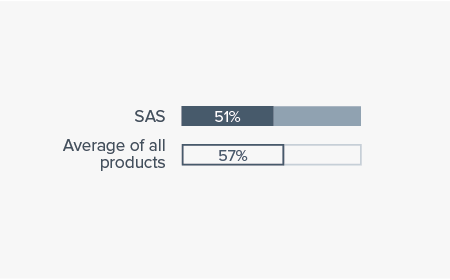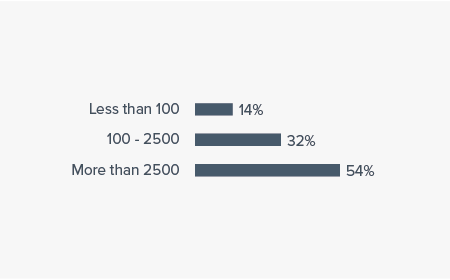SAS
SAS, founded in 1976 and still privately held, is a well known brand in the business intelligence and advanced analytics market. The vendor has specialized in business intelligence, statistics, industry-specific analytic applications, data mining, data management and business intelligence for decades.
SAS, founded in 1976 and still privately held, is a well known brand in the business intelligence and advanced analytics market. The vendor has specialized in business intelligence, statistics, industry-specific analytics applications, data mining, data management and business intelligence for decades.
SAS advanced analytics comprises several solutions targeting different user groups. Business users seeking descriptive statistics and basic advanced analytics functionality are the target audience for Visual Statistics and Visual Data Mining and Learning. These products are complementary and offer basic and advanced machine learning functionality to business analysts and data scientists. It is possible to run these components on SAS Viya, the extended, cloud-enabled in-memory platform. The Enterprise Miner and Factory Miner products are geared towards expert users (i.e., data scientists). These products can also be integrated with the Viya platform. Most products include visual user interfaces to develop and operationalize algorithms. Furthermore, SAS provides In-Memory Statistics, a programming environment for in-memory advanced analytics. The vendor also offers a variety of analytics applications which address different industries and application domains such as fraud detection for financial services, market basket analysis for retail, and churn analysis for telecommunications providers. SAS’s advanced analytics portfolio is complemented by SAS OR, a software package for operations research, SAS ETS for time series analysis and SAS Text Analytics for unstructured data.
SAS tools are capable of handling large data volumes and can connect to a large number of data sources. In addition, the tools are veering more towards open source (e.g., via support of R and Python coding in Jupyter Notebooks or enabling R users to call SAS Procs as an R library). Besides its extensive advanced analytics functionality, the SAS portfolio also comprises mature solutions for the management of machine learning solutions, data management and business intelligence.

User & Use Cases
While only half of the SAS users surveyed are data preparation, data discovery and advanced analytics users, there is a high proportion of current usage in all categories, as well as in advanced analytics and operationalization. SAS provides a strong solution, especially for the operationalization of advanced analytics. While the software also competes with products that have a stronger data preparation focus such as MS SQL Server, it regularly comes up against typical advanced analytics products such as SPSS Modeler and SAP Predictive Analytics. SAS is found predominantly in big companies with an above average number of users per company.
Current vs. planned use
N=27

5 products most often evaluated in competition with SAS
N=28

Total number of users per company
N=28

Advanced analytics users per company
N=28

Advanced analytics users (as a percentage of all users)
N=28

Company size (number of employees)
N=28
